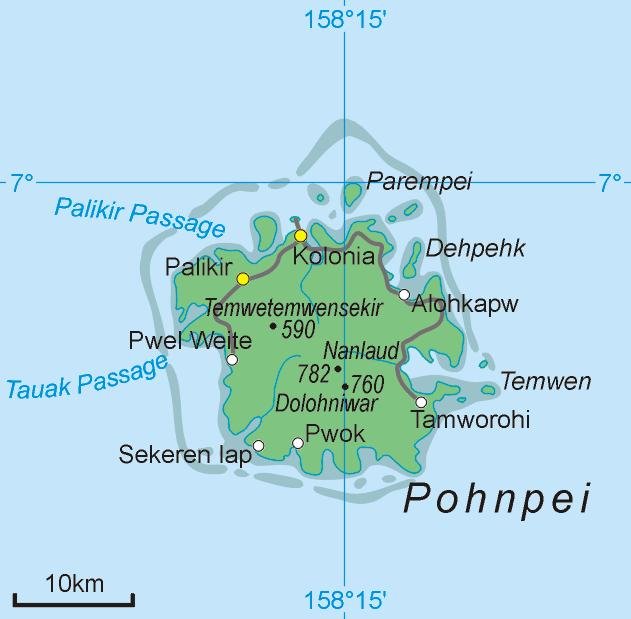The Saudeleur dynasty was a significant ruling dynasty that flourished in the region of what is now known as the Federated States of Micronesia, specifically on the island of Pohnpei. This dynasty is renowned for its engineering marvels, most notably the construction of the ancient city of Nan Madol, which stands as a testament to their power and architectural prowess.

The Saudeleur dynasty emerged around the 13th century and held sway over Pohnpei for several centuries. They established a highly centralized and hierarchical political system, with the Saudeleur serving as the paramount ruler or king. The rulers claimed divine descent, and their authority was deeply rooted in religious and cosmological beliefs.
The Saudeleur dynasty’s control extended beyond Pohnpei, with the rulers establishing tributary relationships with neighboring islands. The dynasty’s influence and power were likely bolstered by their monopoly over the stone resources used in the construction of Nan Madol, which gave them considerable economic and political leverage.

Religion
Our understanding of the Saudeleur religion is primarily based on oral traditions and archaeological evidence, as written records from the time are scarce.
The religion of the Saudeleur dynasty was deeply intertwined with their political and social structure. The religious beliefs and practices of the Saudeleur people played a significant role in legitimizing the authority of the rulers and shaping their interactions with the spiritual realm.
The Saudeleur dynasty’s religion was characterized by a complex system of beliefs and rituals, rooted in the cosmology and mythology of the Pohnpeian people. Central to their religious worldview was the concept of a hierarchical universe, with multiple layers representing different realms and deities.
At the pinnacle of their religious pantheon was the supreme deity known as Nahnisohn Sahpw, who was believed to govern the entire universe and held ultimate power. Nahnisohn Sahpw was considered the progenitor of the Saudeleur rulers, emphasizing their divine descent and authority. The rulers acted as intermediaries between the spiritual and earthly realms, responsible for maintaining harmony and balance between humans and the gods.
The Saudeleur religion also recognized other important deities and spirits associated with specific natural phenomena and places. These included deities associated with the sea, land, sky, and various natural elements. Each deity had its own realm of influence and was approached through specific rituals and ceremonies.
Ceremonial practices held great significance in the Saudeleur religious system. Elaborate rituals and offerings were conducted to honor the deities and seek their blessings. These ceremonies took place at sacred sites, including the monumental structures of Nan Madol. The rulers and priests played key roles in performing these rituals, acting as intermediaries and conduits between the human and spiritual realms.
Divination and oracular practices were also common in Saudeleur religious traditions. Diviners and priests would interpret natural signs, dreams, and other omens to seek guidance from the gods and make predictions about future events. The insights gained from these divination practices were used to inform decisions regarding important matters such as warfare, agriculture, and political affairs.
Alongside the spiritual beliefs and practices, ancestor worship held a prominent place in Saudeleur’s religious life. Ancestors were venerated and regarded as powerful spirits who could intervene in the lives of their living descendants. The royal lineage of the Saudeleur rulers was especially revered, and ancestral rituals were performed to honor and seek the guidance and protection of the past rulers.

Downfall
Over time, the Saudeleur dynasty experienced internal strife and external pressures. Around the 16th century, a combination of political rivalries, social unrest, and environmental challenges led to the decline of their centralized authority. The dynasty eventually fragmented, giving way to a more decentralized political system.
The Saudeleur dynasty’s legacy is not only evident in the architectural marvels they left behind but also in the cultural traditions and stories passed down by the descendants of the ancient Pohnpeian people. The Saudeleur dynasty’s achievements are a testament to the ingenuity and organizational abilities of the ancient Micronesian people, and their impact on the cultural landscape of the region is profound.






















Comments 0